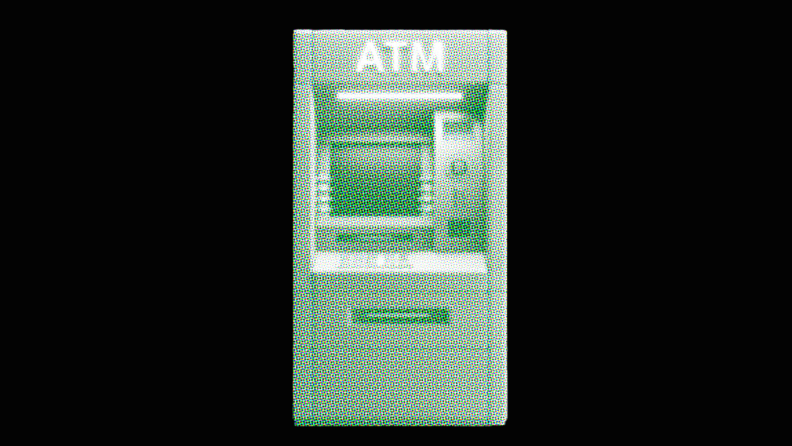Managing liquidity is non-negotiable; done wrong, your business’s survival is in jeopardy. And if those illiquidity issues go unchecked, you could end up in serious trouble — especially in a market where short-term capital is hard to find.
This is no time to be caught short of cash, long on inventory, or both.
Not when interest rates are double what they were a year ago and revolving credit is hard to find.
Not when the International Monetary Fund projects that the world’s advanced economies will grow just 1.4% next year.
Harvard Business Review
There are multiple approaches to liquidity management. In this guide, I’ll focus on accounts payable best practices — one of the most underlooked areas of financial management.
How To Measure Liquidity
Liquidity ratios are the quickest way to gain insights into your business’s liquidity. Here are some commonly used liquidity ratios:
- Current ratio: The current ratio is the most lenient liquidity ratio because it measures liquidity over one full year. It tells you the proportion of current assets compared to current liabilities. While the ideal current ratio differs for all companies, a ratio greater than one indicates you have sufficient liquidity to cover current liabilities. Here’s the formula:
Current Ratio = Current Assets ÷ Current Liabilities
- Quick ratio: Quick ratio is slightly stricter than the current ratio because it focuses only on accounts receivable, short-term investments, and cash and cash equivalents. Inventories and other current assets are excluded. The logic is that converting inventory into cash is more difficult compared to other current assets. The formula to calculate the quick ratio is:
Quick Ratio = [Accounts Receivable + Short-Term Investments + Cash and Cash Equivalents] ÷ Current Liabilities
- Cash ratio: The cash ratio is the most conservative of all liquidity ratios. It excludes all current assets but cash and cash equivalents. Think of it as an assessment of liquidity during an emergency. If you had to discharge all current liabilities right away, do you have enough cash for it? Here’s the formula:
Cash Ratio = Cash and Cash Equivalents ÷ Current Liabilities
These metrics help establish a starting point and track progress when you’re trying to improve liquidity. With that foundation, let’s talk about the accounts payable best practices you should follow to maximize liquidity.
10 Accounts Payable Best Practices
Some of these practices can be done automatically; others require a bit of back and forth. Regardless, they'll help shape up your cash position, getting you out of crunch zone.
1. Prioritize Invoices
Prioritize invoices based on the following factors:
- Opportunity cost (rate of return on marketable securities or other cash equivalents)
- Availability of early payment discounts
Paying invoices before time comes with an opportunity cost. The money you paid early could’ve been invested in marketable securities at a certain rate of return.
Suppose an invoice worth $50,000 is due four months from now. One month later, you decide to pay the invoice. If you don’t pay early, you can park the money in marketable securities and generate, say, a 4% return for three months. This means you lose $500 by paying early, calculated as:
Money Lost = [Amount x Return (%) x (3 months/12 months)]
$500 = [$50,000 x 4% x 3 months/12 months]
But before you decide to pay the invoice the day it’s due, look for discount opportunities. If the seller offers a 5% discount for early payment, you save $2,500 — this not only improves your cash flow but also adds to your bottom line.
When you receive hundreds of invoices, manual invoice approval and decision-making are impractical. That’s where accounts payable automation can help — find a great accounts payable automation software solution to automate your accounts payable and invoice approval processes. This will help you make financially smart decisions at scale.
The Best AP Automation Tools
Our team has reviewed thousands of financial software tools — these are the best ones for AP automation:
2. Simplify Your AP Workflow
Simplify your processes to make it easier for the AP department to monitor payables and build strategies to minimize liquidity. Here are some ways to streamline the accounts payable process and help your AP team:
- Standardize your AP workflows.
- Identify bottlenecks in the process and remove them.
- Automate your AP process. Software solutions can help you automate most AP tasks, such as payment processing, auto-approving payments under a certain threshold, and reconciling payments to invoices.
- Don’t pay inaccurate invoices. Send them back to the supplier.
- Process invoices on time and stamp them. Complete the process according to internal service level agreements.
- Pay invoices on the due date. Avoid late payments, as that puts your vendor relationships at risk and may result in late fees.
- Develop channels and processes for exception reporting and handling.
- Replace paper invoices with an Electronic Data Interchange (EDI) system that allows vendors to submit invoices electronically. EDI-based invoices are easier to track and can help you approve and record payments automatically.
3. Formalize Your AP Workflow
Formalizing the AP workflow helps ensure efficiency, accuracy, and compliance. Create a structured and documented workflow that includes guidelines for specific areas. Here are examples of things to include in a formalized AP workflow.
- Setup access control: Restrict access to AP data to people who need it. Accounts payable software can help you authorize users to access data with varying permission levels based on their role.
- Internal controls: Implement internal controls to prevent fraud and discrepancies, and conduct regular audits to ensure the effectiveness of these controls. Robust internal controls prevent fraud and human errors, which helps save time. For example, three-way invoice matching is a great way to prevent AP fraud and errors.
- KPIs: Define KPIs to establish accountability. KPIs help the AP team assess if their strategies are working. When trying to maximize liquidity, tracking liquidity ratios helps your AP team judge the effectiveness of their strategies.
4. Renegotiate Payment Terms
Payment terms aren't set in stone. If you’re trying to maximize liquidity, it’s worth talking to any vendors, especially ones you have strong supplier relationships with, about potential changes in payment terms.
Most invoices come with net 30, 60, or 90-day payment terms. Talk to the vendor about offering a longer credit period or discounts for an early payment. If the current mode of payment is expensive, talk to vendors about an alternative payment method. Even if you get just a few vendors to agree, you might see a significant impact on your liquidity.
5. Shop for Discounts
Discounts are often more beneficial than a longer credit period, provided you’re not in a cash crunch. However, discounts also translate to a lower average cash balance — this means discounts won’t increase liquidity in the short term but will considerably lower cash outflows in the long run and improve liquidity.
6. Automate Your AP Processes
Automating AP processes frees up your team’s time and eliminates the complexities and inefficiencies of AP processes. Find an AP automation solution that can take care of more than just basic data entry.
For example, the software should be able to automatically scan invoices and match them to corresponding payments and purchase orders in real-time. Software with automated reporting plays a key role in helping you track liquidity. Reports that periodically offer an overview of liquidity ratios and spend analysis allow your team to make smarter decisions about AP processes to maximize liquidity.
7. Check for Duplicate Payments
Duplicate payments can turn into a major cash flow leakage issue if not checked. Even with automated invoice processing, regularly audit both invoices and payments to ensure there are no duplicates.
Alternatively, you can automate the process using accounts payable systems that offer a built-in duplicate detection feature.
Best Overarching AP Software
If you’d like a tool to handle the whole AP process, these are your best bets:
8. Review Contracts Periodically
Review contracts periodically to:
- Find opportunities for financial benefits: Use supplier scorecards to monitor performance metrics and ensure compliance with service level agreements (SLAs). Non-compliance with SLAs might be a good opportunity for financial benefits.
- Optimize payment terms: Review contracts and see if you need to adjust and optimize payment terms based on changes in factors like market conditions. Extending payment terms can increase Days Payable Outstanding (DPO) and improve overall liquidity.
- Identify cost reductions and avoid automatic renewals: Contract reviews can help you find areas where you can reduce costs, such as by eliminating unused services or renegotiating a lower rate due to market changes. It can also help identify and prevent automatic contract renewals for services you no longer need.
9. Work with Pre-Approved Vendors
Some accounts payable best practices start before the work even begins — case in point: vendor selection.
Working with pre-approved vendors is a great internal control to prevent fraud. Pre-approve vendors by assessing factors like:
- Availability of products
- Pricing
- Lead times
- Reliability
Once you have a list of pre-approved vendors, create a master file of the vendors and allow only specific team members to access and edit the vendor file.
Add all details, including the approved prices and mutually agreed lead times, to the list. This ensures your employees don’t just create bogus vendors in the AP system and transfer money to their own accounts, or manipulate the price in the invoice to collude with the vendor.
The money you don’t lose adds up, improving your liquidity.
10. Include Anti-Fraud Measures
According to a report from the Association of Certified Fraud Examiners (ACFE), U.S. businesses lose an average of 5% of their gross revenue to fraud, and 12% of these frauds occur in the accounting department.
Implementing strong fraud detection measures can help ensure financial integrity. Internal controls like segregation of duties, advanced software that can pick up on anomalies, and regular audits are critical to preventing fraud. They also all work together to create a trail that helps you find inconsistencies that may indicate fraud retrospectively.
Liquidity Has Major Financial Impacts
Running low on liquidity for prolonged periods can create unrest among investors and lenders. It can also increase the cost of borrowing short-term capital and result in a cash crunch in the long term.
AP processes are a powerful lever for managing liquidity; following accounts payable best practices can help you keep everything under better control.
Want to read more financial insights? Subscribe to our free newsletter to receive expert advice, guides, and insights from finance leaders every week.



